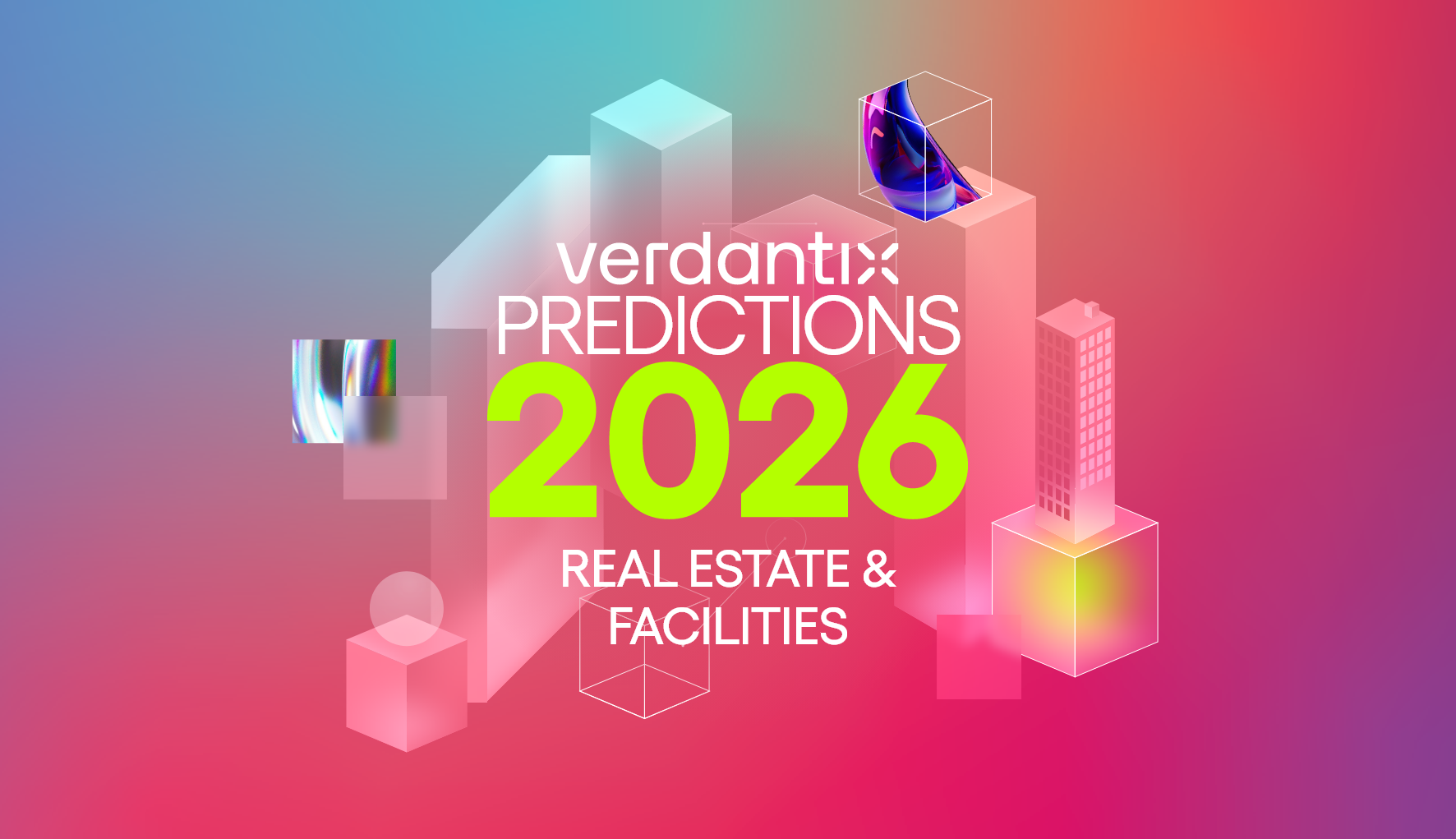Market Size And Forecast: Space And Workplace Management Software 2023-2029 (Global)
04 Nov, 2024
Access this research
Access all Real Estate, Facilities & Workplace Tech content with a strategic subscription or buy this single report
Need help or have a question about this report? Contact us for assistance
Executive Summary
This report helps strategy, product and marketing officers at firms providing space and workplace management software (SWMS) solutions better understand the market opportunity, define business development strategies and forecast future revenue growth potential. The Verdantix model, which is based on updated supplier revenues and current macroeconomic drivers, calculates that the market will reach $1.3 billion in 2024. It will grow at a CAGR of 10% to surpass $2.1 billion in 2029. For the first time, our analysis segments the market forecast into 10 building asset types, alongside seven functionality areas, and regional breakdowns. The focus on occupant experience and wellbeing is driving growth for occupant engagement and indoor air quality (IAQ) monitoring solutions. Growth in space management applications is being fuelled by portfolio right-sizing activities, as executives seek to better understand utilization to drive decision-making. However, economic uncertainty and cost-cutting pressures are holding back investments in SWMS.
Summary for decision-makers
Space and workplace management software (SWMS) market size and forecast methodology
An overview of the SWMS market
The SWMS market was worth $1,197 million in 2023
Growth in the SWMS market will be driven by the increasing focus on employee experiences and workplace optimization strategies
The SWMS market will be held back by economic volatility and cost-cutting strategies
The SWMS market will grow at a CAGR of 10% to become a $2.1 billion market in 2029
Space and workplace management software (SWMS) market size and forecast methodology
An overview of the SWMS market
The SWMS market was worth $1,197 million in 2023
Growth in the SWMS market will be driven by the increasing focus on employee experiences and workplace optimization strategies
The SWMS market will be held back by economic volatility and cost-cutting strategies
The SWMS market will grow at a CAGR of 10% to become a $2.1 billion market in 2029
Figure 1. Verdantix market size and forecast methodology
Figure 2. Definitions for the seven major functionality areas of SWMS
Figure 3. Mapping SWMS functionality areas from the 2022 report
Figure 4. Model segmentation
Figure 5. Definition of asset type segments
Figure 6. 2023 SWMS spend by region
Figure 7. 2023 SWMS spend by country
Figure 8. 2023 SWMS spend by building asset type
Figure 9. 2023 SWMS spend by functionality area
Figure 10. Use of commercial software to support reservations
Figure 11. Use of commercial software to support space and workplace processes in 2023, by region
Figure 12. SWMS forecast by region (2023-2029)
Figure 13. SWMS forecast by functionality area (2023-2029)
Figure 14. SWMS forecast by top five building asset types (2023-2029)
Figure 15. SWMS forecast by bottom five building asset types (2023-2029)
Figure 2. Definitions for the seven major functionality areas of SWMS
Figure 3. Mapping SWMS functionality areas from the 2022 report
Figure 4. Model segmentation
Figure 5. Definition of asset type segments
Figure 6. 2023 SWMS spend by region
Figure 7. 2023 SWMS spend by country
Figure 8. 2023 SWMS spend by building asset type
Figure 9. 2023 SWMS spend by functionality area
Figure 10. Use of commercial software to support reservations
Figure 11. Use of commercial software to support space and workplace processes in 2023, by region
Figure 12. SWMS forecast by region (2023-2029)
Figure 13. SWMS forecast by functionality area (2023-2029)
Figure 14. SWMS forecast by top five building asset types (2023-2029)
Figure 15. SWMS forecast by bottom five building asset types (2023-2029)
Allentown School District, American Chemical Society (ACS), Appspace, Bibliothèque de l'Université Laval, Eden, Envoy, Eptura, Freespace, Gensler, Georgia Institute of Technology, HqO, Indian Green Building Council (IGBC), International Monetary Fund (IMF), International WELL Building Institute (IWBI), IotaComm, Landsec, Modo Labs, National Australian Built Environment Rating System (NABERS), Occuspace, Organisation for Economic Co-operation and Development (OECD), Robin Powered, Saltmine, ServiceNow, Smart Spaces, Smarten Spaces, University of Missouri, University of North Carolina at Chapel Hill, University of Regina, University of Utah, US Green Building Council (USGBC), VLogic Systems, World Bank
About the Authors

Joy Trinquet
Senior Analyst
Joy is a Senior Analyst at Verdantix, specializing in real estate, facilities and workplace technology, with a particular focus on integrated workplace management systems/conn...
View Profile
Claire Stephens
Research Director
Claire Stephens is a Research Director at Verdantix, leading research into technologies and services shaping the real estate and the built environment, encompassing ...
View Profile







